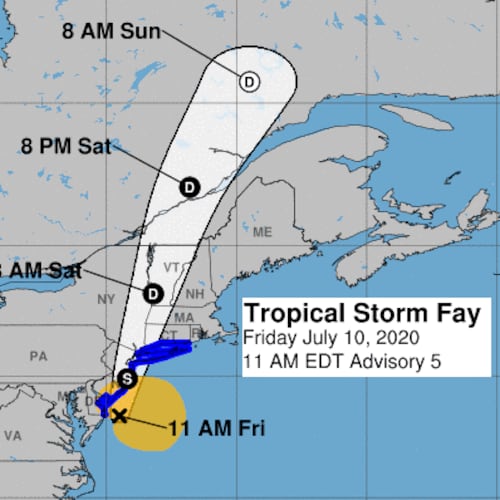With over $2 trillion added to the federal debt since he took office just over two years ago, President Donald Trump will deliver a spending plan to the Congress on Monday which is certain to spur a sharp debate with Democrats over proposed cuts in domestic spending programs, but won't come close to producing a balanced budget for more than a decade.
"It is time for Congress to join the president in his commitment to cutting spending, reducing bloated deficits, and getting our national debt under control. America’s future generations are depending on them," said Russ Vought, the acting chief of the White House budget office.
But, so far, President Trump's time in office has seen the growth in the deficit accelerate, from $584 billion in President Obama's last full year in office in 2016, to $779 billion in 2018.
As of January, the deficit in 2019 was running 77 percent higher than a year ago, as even White House budget estimates have forecast a yearly deficit over $1 trillion in coming years.
Here's some of what to look for in Monday's budget submission, which is titled, "A Budget for a Better America."
1. Domestic spending cuts, back door increase for defense. With no deal as yet to avoid budget caps from a 2011 deficit law, spending in 2020 would be limited on defense to $576 billion, and $542 billion for domestic programs. But the President wants much more for the military, so the Trump Administration will reportedly propose spending a massive $174 billion for the "Overseas Contingency Operations" fund - an increase of $106 billion - for a total military budget of $750 billion. Budget watchdog groups say the idea is a big, fat budgetary gimmick, nothing but a slush fund for the Pentagon.
2. Trump to request $8.6 billion for the border wall.
With no confirmed details yet on how the President will shift around some $6.6 billion in the Pentagon budget to fund construction of his border wall, Mr. Trump will reportedly ask Congress to approve $8.6 billion for the wall in 2020. Democrats had a simple reaction on Sunday. "No," said Sen. Brian Schatz (D-HI). "No," said Rep. David Cicilline (D-RI). "Dead on arrival," said Rep. Mike Quigley (D-IL). Even after a 35 day partial government shutdown earlier this year, the President received $1.375 billion for barriers - but not a wall, and there seems to be little chance that dynamic will change for Democrats in the 2020 budget debate. "Congress refused to fund his wall," Speaker Nancy Pelosi tweeted on Sunday. "The same thing will repeat itself if he tries this again."
3. Goal for a balanced budget would be 2035.
Even if President Trump serves two terms in office, his own White House doesn't forecast anything close to a balanced budget. The last official budget estimates from the White House in July of 2018 - which will be updated with this new budget proposal - predicted the deficit would peak over $1 trillion for three years, and then finally get below $500 billion by 2027, adding almost $8 trillion in deficts along the way. More conservative Republicans in the House aren't worried by those details, as they say the President has shown "fiscally conservative leadership," even though the debt has already increased by more than $2 trillion during his two plus years in office.
4. Not all the details, and already behind schedule. President Trump was supposed to have sent this budget to Congress by the first Monday in February - but today will only bring the basic highlights, not all the nitty gritty details of the proposal. Part of the reason is that the 35 day partial government shutdown delayed a lot of work in government agencies. All of the spending work is supposed to be done by Congress each year by September 30 - but that's only happened four times since the budget process was reformed in 1974. Congress has six and a half months until the deadline - it's hard to see how lawmakers avoid more stop gap funding plans - and maybe another shutdown as well.
5. A new dynamic with divided control of Congress.
In the first two years of the Trump Presidency, Republicans in the House and Senate were in charge - but now, Democrats will have first crack at the President's budget, and they are certain to take a much different road. In a sense, that's a good thing for Mr. Trump, giving him the chance to battle it out with Democrats more clearly on budget priorities. But it also amplifies the chance for a government shutdown on October 1. Speaker Pelosi likes to say that a budget is a 'statement of values.' After the Trump budget gets delivered to Congress, the next move will be up to Democrats in the House, to forge their on budget outline for 2020. There are political pitfalls ahead for both sides.
About the Author
The Latest
Featured




